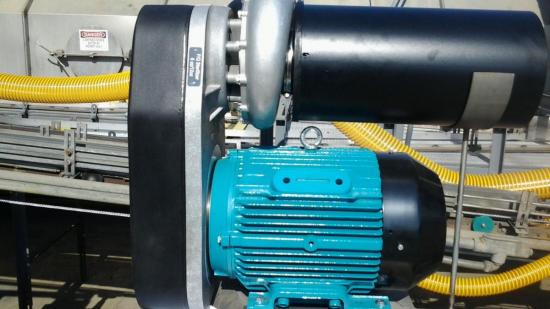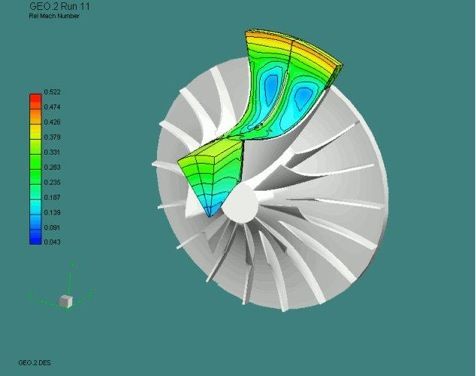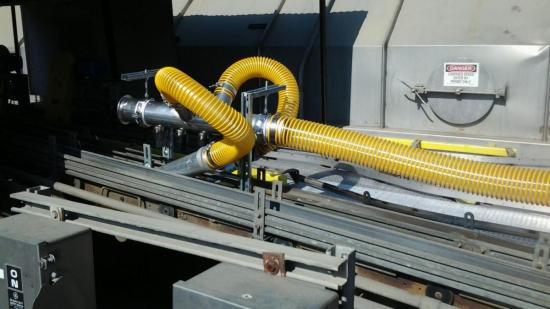Many manufacturing processes are like offensive linemen. When everything is running smoothly, nobody tends to notice. But, when an application starts creating a hazardous work environment (think too many blindsided sacks), or the products start spoiling (think shutout or a losing season), you best believe someone will start paying attention.
We recently spoke with Greg Cannon, National Sales Manager at Process Air Solutions, and he discussed just such a situation.
Cannon told us about a food processing company that was experiencing some critical quality and safety issues due to their blower system. In an effort to address those problems, Cannon and Bob Endress, Western Sales Representative at Process Air Solutions, retrofitted the system with new blowers, air nozzles and air knives. In addition to eliminating the original issues associated with the blower application, the team at Process Air Solutions helped the manufacturer save tens of thousands of dollars in annual energy costs.

Sample installation of the Vortron Z40e centrifugal blower
Caution: Slippery (and Costly) When Wet
The blower system retrofit that Cannon discussed involved a canning facility. While this particular food processing company places a high priority on sustainability, they did not initially approach Process Air Solutions to improve their energy efficiency. Rather, there were some fundamental flaws with their blower system, and those flaws were resulting in dangerous working conditions and an alarming number of product defects.
The cannery uses blowers on their production lines to dry cans as they come out of a cooling system. The cans are jettisoned onto the conveyor belt at a rate of roughly 600 cans per minute. That is a lot of cans to dry in a small timeframe. The conveyors then transport the cans to the palletizing area of the facility. Depending on the production line, a can’s journey to palletization could be a quick trip or a long trek throughout the factory. This facility has 26 production lines, and each line had a dedicated blower for drying the wet cans.
The problems with the blower system were most noticeable in the palletization area. Because the blowers were not drying the cans effectively, water would drip from the cans and pool on the floor, causing slip hazards that required constant attention from maintenance personnel. In addition, the water that collected on the cans would cause rusting, which led to rejected products. According to Cannon, the company recorded $100,000 worth of rejects in one 4-month production season, prior to installing their new blower system. Had the manufacturer operated on a yearlong basis, the costs to the company could have been three times as large.
“[That] was really the initial reason for us coming in to look at the facility. It was to evaluate their lines because there were quality issues and the slip hazard issue,” Cannon explained. “The quality issue was that the cans would rust. The cans go back to palletize in their warehouse until someone calls in a request. They would have rusty cans because water was left on the cans from the inadequate blowers. At that point, they can’t sell them.”
Blower System Retrofit
The existing blower system was antiquated, ineffective and inefficient. As noted previously, the manufacturer has 26 production lines in operation. Those lines each had a dedicated blower that ranged from 20 to 30 hp. The air was delivered at 1.3 psi through an array of low-pressure aluminum air knives with 0.035” slot gaps.
According to Cannon, the original blower installation was far from ideal, especially at the point of use. In order to effectively dry cans, an air knife system should be installed within 2 to 3 feet of the conveyor belt. In many instances throughout the facility, this wasn’t the case. Additionally, due to the speed and number of the cans moving through the conveyor lines, more pressure was required to dry the cans adequately.
Process Air Solutions was able to significantly improve the blower system, in regards to both system performance and energy efficiency. The improvements began with the installation and consolidation of the air blowers. At each line, Process Air Solutions replaced an old 20- or 30-hp blower with a new Vortron 20-hp Z40e centrifugal blower. In instances where there were adjacent production lines, they were even able to eliminate a blower entirely by replacing two blowers with one. Not only did this improve energy efficiency, but it also freed up space in the motor control room and reduced the time spent maintaining superfluous machines. Overall, the company was able to reduce the number of blowers installed at the facility from 26 to 18.
The new blowers were dramatically more efficient than the older blowers. According to Cannon, the best-case scenario for the original blowers was an operating efficiency of roughly 36 or 37 percent. In contrast, the Vortron Z40e blower can achieve a peak operating efficiency of up to 80 percent.
“Our blowers came out to be about twice as efficient,” Cannon said. “The difference is in the overall compressor stage design, which is backswept. It is much more dynamic than other stage designs. If you look at the cut, it’s like designing a fan for a jet engine that has 20,000 pounds of thrust as opposed to one with 10,000 pounds of thrust. Our design software shows the flow characteristics of that impeller design.”

Design software illustrating the flow characteristics of the Vortron Z40 impeller
Mapping Demand, Customizing Solutions
Process Air Solutions did not simply install the new, more efficient Vortron blowers. According to Cannon, the company takes a comprehensive look at a facility’s blower demand to determine the optimum system design, from the blowers down to the air delivery fixture. When evaluating a facility’s blower system, they provide their clients with a “compressor map,” which provides flow-to-pressure operating points and efficiency islands.
“When we talk about efficiency and we look at an operating point, we want to know how efficient the blower is at that operating point,” Cannon explained. “We’ve mapped every one of these blowers on a gas compressor stand, which takes a lot of hours to do. So, hypothetically, when we say that a blower is going to provide 1000 cfm at 3 psi and it’s going to take 19.68 hp to do that, it’s going to take exactly that.” (Figures are corrected to site conditions).
Along with the compressor map, Process Air Solutions customizes the air delivery fixture for the given application. Part of the problem with the original blower system was that it only provided 1.3 psi of air to dry the cans. With approximately 600 cans moving through the conveyor every minute, there was just not enough air pressure to dry the cans with an air knife.
To address the issue, Process Air Solutions designed a more holistic air delivery system that dried the cans from every angle. It was at this stage of the process that Endress’ expertise came into play.
“Bob Endress was really instrumental in the design and implementation of the air delivery fixture,” Cannon said.
Process Air Solutions installed an 8-nozzle array at the top of the line, a 2-nozzle array to dry the bottoms of the cans, and two 12” air knives on the sides. The system also provided air at a higher pressure, blowing off the cans at 3.1 psi with a volume of 1194 scfm. Since the installation, there have not been any product rejects, and the slip hazards have been completely eliminated.

Sample installation of an air delivery system from Process Air Solutions
Return on Investment
To make the results of the new installation more tangible, Cannon quantified the manufacturer’s overall return on investment (ROI). However, it is important to note that this facility only operates 4 months out of the year. To put the results in context, we provide the ROI figures as if the plant ran continuously throughout the entire year (Refer to Table 1).
Table 1: Simplified Return on Investment

¹ Blower project costs are estimated based on a firm equipment value of $174,438 plus assumed installation costs of $50,000.
In essence, there was a 10-month payback on the investment in the new blowers and the associated equipment, which includes the annual energy savings and an energy rebate from the utility company. While that means that it will take this particular manufacturer 2.5 years to achieve its ROI, a typical manufacturing plant that operates yearlong could achieve an ROI with this type of installation in less than one year.
“It really was a straightforward job. The ROI is rather large because there were so many blowers, but it really worked out well,” Cannon elaborated. “This past production season was their most profitable, and they have traced that back to being more efficient in the way they do it. Obviously this project was a big part of their efficiency initiative.”
About Process Air Solutions
Founded in 2006, Process Air Solutions is an independently run company based in Fenton, MO. The company is the exclusive packager of Vortron centrifugal blowers for the industrial market, and their standard offering includes 3- to 75-hp oil-free blowers.
Process Air Solutions commonly works with air compressor distributors, and they also work with original equipment manufacturers (OEMs), especially with manufacturers of bottling and food processing machinery. They are also the only blower company approved by the military to provide ground support equipment for cooling avionics.
The Vortron oil-free centrifugal blowers boast an 80,000 hour design life, and routinely outlast that mark. This is largely due to a proprietary, permanently lubed and preloaded spindle assembly on the bearing cartridges. According to Cannon, the blowers are extremely durable and maintenance-free.
For more information about the companies discussed in this article, contact Greg Cannon, National Sales Manager at Process Air Solutions. He can be reached by telephone at (636) 343-2021. You can also visit www.processairsolutions.com, or www.vortron.com.
For more information about Blower Technology, please visit www.blowervacuumbestpractices.com/technology



